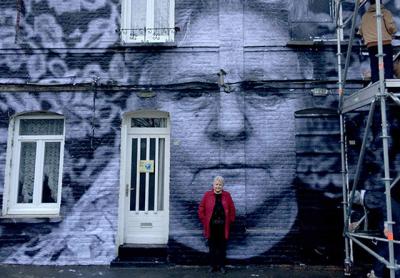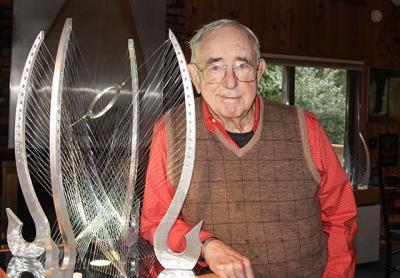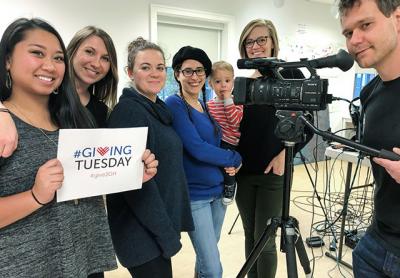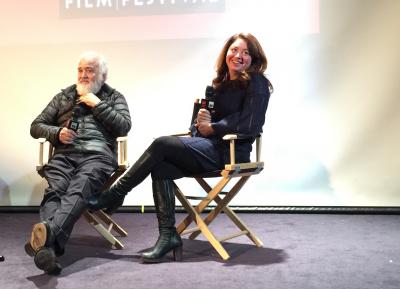The Art Scene: 12.14.17
The Art Scene: 12.14.17
At Watermill for 2018
The Watermill Center has announced its 20 selections for 2018 artist residencies. Each artist or company will spend two to six weeks at the center utilizing its art collection, library, archives, and grounds to create “works that critically investigate, challenge, and extend the existing norms of artistic practice,” according to a release.
Chosen by a selection committee of artists, journalists, academics, and curators, the 2018 residents are Antimetodo (Chile), Ville Andersson (Finland), Jarrod Beck (U.S.), Tania Bruguera (Cuba), Anne Carson (Canada), Jayoung Chung (South Korea), El Colegio del Cuerpo (Colombia), Lauren DiGiulio (U.S.), Saskia Friedrich (Germany), Groupe Karol Karol (France), Molly Joyce (U.S.), Masako Miki (Japan), Iva Radivojevic (Serbia), Hugh Ryan (U.S.), Bastienne Schmidt (Germany), John Stintzi (Canada), Tercer Abstracto (Chile), Barthélémy Toguo (Cameroon), Boris Willis (U.S.), and Joe Zorrilla (U.S.).
Inga Maren Otto Fellowships have been awarded to Ms. Miki, Ms. Bruguera, Ms. Carson, and Mr. Toguo. Each fellow receives a stipend, travel expenses, and financial support for a public exhibition of work created during the residency. Fellows’ exhibitions are organized by Noah Khoshbin and Daneyal Mahmood.
The residency program for 2018 will begin on Jan. 8 with Ms. Radivojevic, a Serbian video artist from Brooklyn, and Mr. Willis, a multimedia artist with a background in dance and theater.
Oursler Installation
“Facial Recognition,” a 2017 video installation by Tony Oursler that investigates the technology of facial recognition systems, in on view 24/7 in the window of the Rental Gallery in East Hampton through January.
A pioneering figure in new media since the 1970s, Mr. Oursler is known for liberating video art from the flat screen by incorporating video projections into three-dimensional environments. Disarming and often funny, his videos have long taken as their subject the human face, embedding the moving image and audio into unexpected contexts.
His recent interest in facial recognition technology is a natural extension of his longtime fascination with the human face and how it can be captured and exploited in a world increasingly preoccupied by security and surveillance. At the same time, according to the gallery, “the work’s color and movement evoke magic lanterns, Cubist painting, Victorian Christmas light shows, exquisite butterflies of beauty, and imagination that cannot be constrained.” The holiday window installation has been organized by Peter Fleissig, a collector and curator.
Vintage Photographs
An exhibition of rare vintage photographs by Charles Jones (1866-1959), an English gardener whose artfully composed images of vegetables, fruits, and flowers were discovered in 1981 at a London antiques market, is on view through Dec. 31 at the Drawing Room in East Hampton.
Printed from glass plate negatives, Jones’s gold-tone gelatin silver prints reflect a modern sensibility that differed from his contemporaries’ prevailing approach to botanical subjects. While his work as the gardener at Ote Hall in Sussex was documented as early as 1905, his achievement as an early photographer went unrecognized during his lifetime.
The gallery is also showing paintings, sculpture, and works on paper by Stephen Antonakos, Antonio Asis, Vincent Longo, Alan Shields, and Jack Youngerman through Jan. 14.
Monoprints at Eagle
Monoprints by Lesley Obrock, a painter whose work is rooted in her background as a landscape designer, are on view at the Golden Eagle Art Store in East Hampton through Dec. 31, with a reception set for tomorrow from 4 to 6 p.m. Though she occasionally produces work that is representational, the East Hampton artist says she “leans more often toward the abstract.”





